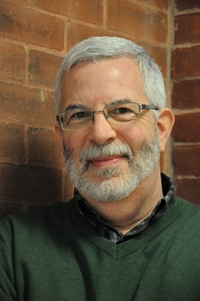Trouble at School and The Need For “We”
There is no doubt there is trouble at school. Virtually all educators and clinicians are talking about the rise of childhood anxiety being seen in greater numbers and in kids younger and younger. We are also seeing Educational Assistants leading the way of public sector workers with the highest rate of “long term injuries”. The school and student of today is unlike their parent’s generation. But why?
The seeds of why go back 50 years with the beginning of the deinstitutionalization movement. At the time it was all about getting “mental patients” out of hospital and into the community. There was a push away from the expense and stigma of institutionalization. To follow was the deinstitutionalization of institutionalized children. They were those who presented with “mental retardation” typically an outcome of Down Syndrome. There were also those with cerebral palsy and similar issues. The goals of deinstitutionalization were laudable: destigmatize, normalize, integrate. Over the years, we have also changed our language with reference to children with developmental differences.
However, with the push to deinstitutionalize, services did not keep pace. The answer of the day come the 1970’s and 1980’s, was case management. Case management was to be the panacea to help those displaced from institutions navigate the unwieldy and fragmented service delivery system in the general community. Still however, services did not keep pace.
Also occurring in the 1970’s and 1980’s was the impact of the women’s movement, changes to divorce laws and ups and downs of the economy. Together those differences collided to in effect make parents less available to children and thus the term “latch key kid” came about. These were the children whose both parents (separated or together) must each be employed simply to make ends meet. Concern was expressed that these kids may suffer emotionally/psychologically the result of less adult supervision having to run home at the end of their school day to empty houses left to their own and unable to play outside.
Come the 1990’s and 2000’s it was technology driving the wedge and connection between parents and children even wider. Computers in bedrooms, followed by parents on their iPhone and next kids on their android smartphones enlarged the schism and parental availability and influence. Additionally, with the faster rise and falls of the economy and less good paying jobs available, more and more parents must be in the low pay economy and have multiple jobs to just barley stay afloat. Throughout has been the inclusion movement, meaning all children, regardless of special needs would be served within the mainstream education system.
This perfect storm has created more kids with attachment disorders owing to the lack of parental availability, no fault of the parents but an outcome of economic, social and technological change. The impact of attachment disorder is anxiety and other behavioral issues. These kids don’t have the same kind or quality of relationship with their parents in this day and age as their parents had with theirs years ago. This is not an issue of love or caring. This is simply an outcome of the time and attention available for the expression of that love and caring. Parents are stressed out and as such, so are the kids.
Add to the above the fact that services for children with mental health, behavioral or academic problems still have not kept pace and we have more and more children whose behavior is bursting at the seams.
Without an appreciation of these historic events producing this current situation, groups are pitted against each other hurling blame and shame. Parents are vilified by some education workers and education workers are vilified by some parents.
Under duress people hunker down into positional thinking and argue in either or fashion the merits of policy. Parents argue over the merits of inclusion, versus mainstreaming versus least restrictive environment as if one is best for all. With the all or none thinking, the fight is on to argue positionally about the merits of one’s preferred approach to meeting all student needs.
In the meantime, the student still goes without proper supports, violence in the educational workplace escalates as do injuries and children’s mental health goes untreated.
The solution is in “we”.
Parents and education workers must come together. Parents and education workers need demand more resources to meet the needs of today’s student.
Also needed as has always been needed, is a continuum of flexible services. The answer does not lay in one approach or the other but an ability to offer an array of services attuned to the student’s needs at any particular time. Flexible services.
This message couldn’t be timelier given we are at a time when the current conservative government is limiting and withdrawing services, supports and needed curriculum from education.
It can always be argued to seek efficiencies, however, like a wolf in sheep’s clothing, “efficiency” is often code for cuts.
This is not a time for cuts. It is a time for all stakeholders, parents, students, educators, researchers and politicians to come together to review and renew educational policy.
We need parents asking their children, not how was their day, but what was your experience in school today. What did you see? How are your friends and other students? Were there any times you felt afraid today or in the past? What do you do when you don’t understand the work? Is there someone you can ask for help?
As all parents become more attuned to their child’s experience of school, more parents will come to learn the state of today’s classroom. This is not to create shame or blame. This is to create greater awareness so that more parents come to “we” and work along side education workers to create a better educational system.
Parental goals and educational worker goals are aligned.
We all want what is best for the student, the children. We all want a safe work environment where students can learn and flourish and reach their best potential.
With that, we must all work together.
I am Gary Direnfeld and I am a social worker. Check out all my services and then call me if you need help with a personal issue, mental health concern, child behavior or relationship, divorce or separation issue or even help growing your practice. I am available in person and by video conferencing.

Gary Direnfeld, MSW, RSW
gary@yoursocialworker.com
www.yoursocialworker.com for counseling and support
www.garydirenfeld.com – to build your successful practice
Gary Direnfeld is a social worker. Courts in Ontario, Canada, consider him an expert in social work, marital and family therapy, child development, parent-child relations and custody and access matters. Gary is the host of the TV reality show, Newlywed, Nearly Dead, parenting columnist for the Hamilton Spectator and author of Marriage Rescue: Overcoming the ten deadly sins in failing relationships. Gary maintains a private practice in Dundas and Georgina Ontario, providing a range of services for people in distress. He speaks at conferences and workshops throughout North America. He consults to mental health professionals as well as to mediators and collaborative law professionals about good practice as well as building their practice.


Trackbacks & Pingbacks